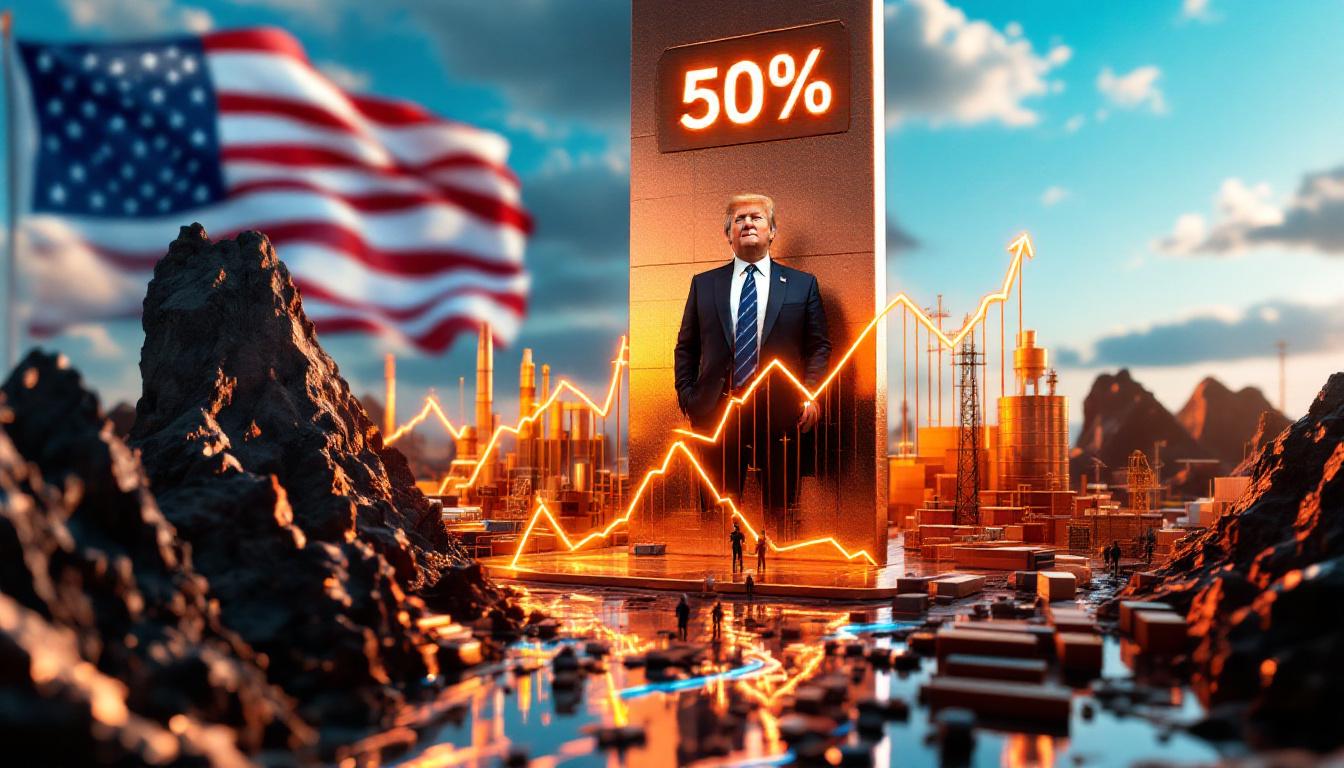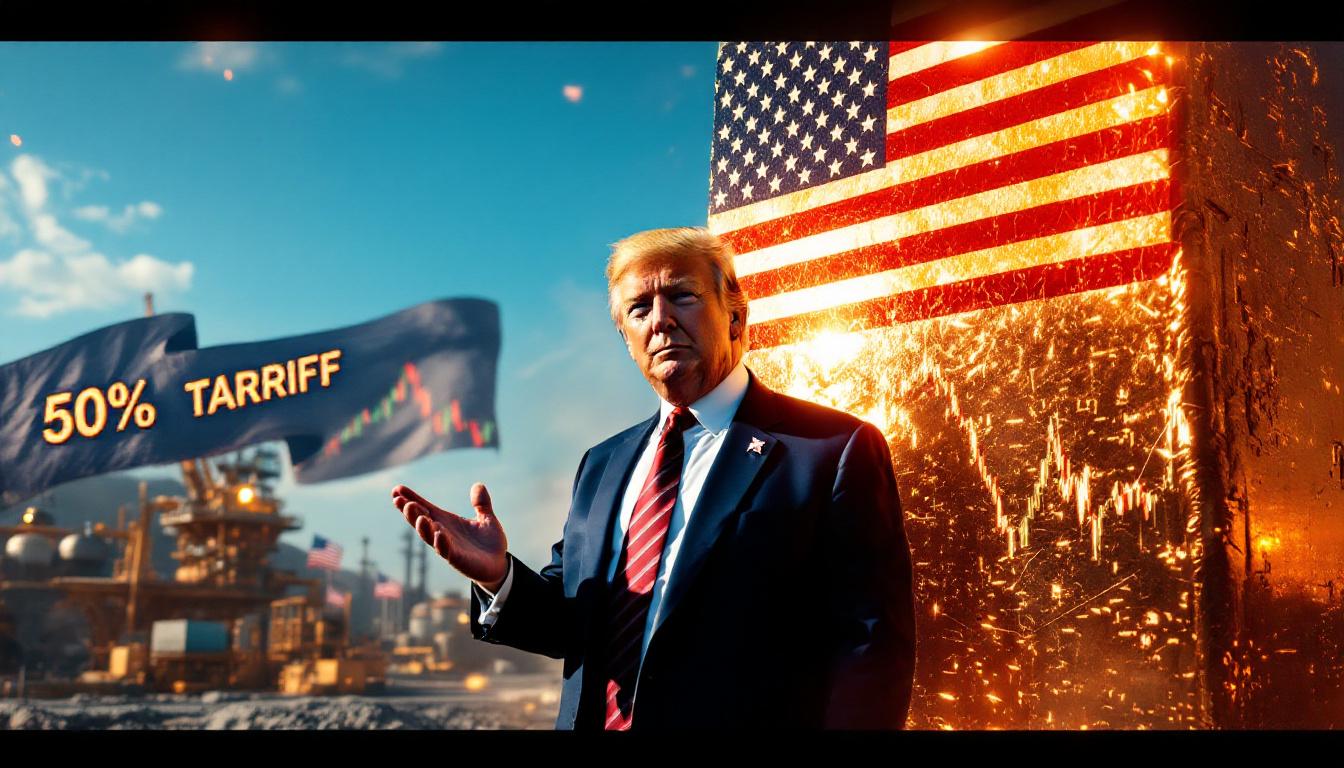What is the Guangxi Yusheng Germanium Products Tender?
Guangxi Yusheng Germanium Industry High-tech Co., Ltd. has announced an open tender for premium germanium products, creating significant interest in the specialized metals market. This tender represents a strategic opportunity for industrial buyers amid ongoing supply constraints in the global germanium sector.
Tender Announcement Details
The tender includes 800 kg of germanium dioxide and 500 kg of zone-refined germanium ingots, all offered as spot cargo with a pickup deadline of July 15, 2025. According to the official announcement from Guangxi Yusheng, minimum bid quantities have been established at 300 kg for germanium dioxide and 200 kg for zone-refined germanium ingots, effectively limiting participation to major industrial buyers.
Starting bid prices have been set at 10,800 yuan/kg for germanium dioxide and 16,200 yuan/kg for zone-refined germanium ingots, positioning slightly above previous successful transaction levels. Notably, the starting price for zone-refined ingots exceeds the previous tender's successful bid of 16,100 yuan/kg, suggesting the seller's confidence in market strength.
The bidding window is relatively brief, with all submissions due by July 10, 2025. This compressed timeline requires potential buyers to make swift decisions regarding their procurement strategies.
Tender Participation Requirements
Participants must accept the self-pickup delivery method, with buyers responsible for all freight costs from Guangxi Yusheng's facilities. This logistical requirement places additional consideration factors on distant bidders who must factor transportation costs into their overall acquisition calculations.
All bid submissions must be directed via email to the company's designated address, with strict documentation requirements. The content quality will be determined exclusively through professional assay results, ensuring transparent quality verification for all parties involved.
Guangxi Yusheng has appointed Mr. Peng as the primary contact person for interested bidders, providing direct access for technical inquiries regarding product specifications and tender procedures. This direct channel facilitates clarification of the stringent quality standards required for these high-purity materials.
Why Are Germanium Tenders Significant in 2025?
The strategic importance of germanium tenders has intensified substantially during 2025, reflecting broader shifts in critical minerals transition and technology supply chains. These public tenders provide crucial market signals during periods of supply uncertainty.
Current Market Conditions
Market participants report persistent supply constraints creating exceptional market tightness. According to industry analysts, global germanium production hovers around 180 tonnes annually, with China controlling approximately 60% of production. This concentration magnifies the impact of any supply fluctuations from major producers.
A notable trend in 2025 has been manufacturer reluctance to sell existing inventory, creating a feedback loop of intensifying scarcity. This reluctance stems from concerns about future supply availability and strategic positioning by producers who anticipate continued price appreciation.
"The current tight supply situation, coupled with manufacturers' strategic inventory conservation, creates favorable conditions for sellers in public tenders," notes a senior metals analyst at Shanghai Metal Market (SMM).
The historical context reinforces the significance of this tender, as previous rounds have established successful high-price transactions. The most recent comparable tender saw zone-refined germanium ingots sell at 16,100 yuan/kg, establishing a benchmark that influences broader market pricing.
Of particular note is the smaller quantity available compared to previous tender rounds. This reduction reflects both strategic inventory management by producers and the genuine constraints on material availability in the market.
Strategic Importance of Germanium
Germanium's critical applications in high-tech industries make these supply events particularly consequential. The element serves as an irreplaceable component in fiber optic systems, infrared optics, polymerization catalysts, and specialized semiconductor applications.
The growing demand in specialized technology sectors has created sustained pressure on supply chains. Military and surveillance applications, particularly in thermal imaging systems, have seen demand increase by approximately 18% year-over-year according to S&P Global's "Critical Minerals Outlook 2025."
Limited global production, complicated by the fact that germanium is primarily recovered as a byproduct of zinc processing and coal ash extraction, creates inherent supply constraints. Industry data suggests that ore grades are declining at approximately 3% annually, further pressuring production capacity.
The strategic value in technological manufacturing cannot be overstated, as high-purity germanium (99.999%+) has no viable substitutes in many critical applications. This irreplaceability magnifies the importance of each significant market transaction.
How Do Germanium Tenders Impact Market Pricing?
Public tenders like Guangxi Yusheng's serve as crucial price discovery mechanisms in the opaque germanium market, establishing market pricing benchmarks that influence transactions throughout the supply chain.
Price Benchmarking Analysis
Previous tender results function as definitive pricing indicators for the broader market. The most recent comparable tender saw zone-refined germanium ingots sell at 16,100 yuan/kg, establishing a reference point for both public and private transactions.
The current starting prices are strategically positioned slightly above previous successful bids—16,200 yuan/kg for zone-refined ingots versus the previous 16,100 yuan/kg. This upward adjustment signals seller confidence in continued market strength.
Market analysis suggests public tenders typically establish spot-market references for private negotiations, often with a 5-7% premium applied in subsequent private transactions. This pattern demonstrates the price-setting power of publicly visible tender results.
Historical data demonstrates the ripple effects of successful high-price tenders. For example, a July 2024 germanium tender in Yunnan province triggered an 8% spot-price surge within just two weeks, according to SMM Price Center data.
Supply-Demand Dynamics
Manufacturer inventory strategies are significantly affecting material availability. With producers holding back stock in anticipation of future price increases, the available supply for immediate purchase has contracted sharply.
Production constraints continue to limit market supply, with three firms controlling over 70% of high-purity germanium production capacity globally. This concentration amplifies the impact of individual producer decisions on market dynamics.
Buyer urgency is increasingly influencing bidding behavior, as manufacturers requiring germanium for production commitments face limited sourcing options. This urgency frequently translates into aggressive bidding strategies.
"The smaller tender volume compared to previous offerings reflects producers' strategic inventory conservation amid sustained demand growth," explains an industry analyst from S&P Global.
Market expectations strongly favor successful transactions at or above the starting prices, given the confluence of tight supply, reduced tender volumes, and continued strong demand from critical applications.
What Are the Key Factors Affecting Germanium Markets in 2025?
The Guangxi Yusheng germanium products tender represents just one aspect of a complex market experiencing supply-demand volatility across multiple high-tech sectors.
Production Challenges
The global germanium supply chain features a limited number of major producers, creating vulnerability to disruption. Production is highly concentrated, with three firms controlling over 70% of high-purity germanium capacity according to S&P Global's "Critical Minerals Outlook 2025."
Technical complexity in germanium refining processes presents a significant barrier to production expansion. Zone refining—required to achieve the 99.999% purity needed for semiconductor and infrared optics applications—involves sophisticated technical expertise and specialized equipment.
Geographic concentration of production capacity, predominantly in China (60%) and Russia (15%), introduces geopolitical risk factors to the supply chain. This concentration has been highlighted by recent export control measures implemented by various governments.
Resource availability constraints continue to pressure the production pipeline. As germanium is primarily recovered as a byproduct of zinc mining and coal ash processing, production volumes are indirectly determined by the economics of these primary industries.
Demand Drivers
Advanced technology applications requiring high-purity germanium continue to proliferate. Fiber optic networks, expanding at approximately 12% CAGR according to Grand View Research, require germanium-doped glass for signal transmission over long distances.
Specialized industrial uses create consistent baseline demand. Infrared optics for thermal imaging, night vision systems, and surveillance equipment rely on germanium's unique optical properties in the infrared spectrum.
Strategic stockpiling by manufacturers and governments has intensified following supply disruptions in 2023-2024. This non-consumption demand adds significant pressure to available market supply.
Emerging applications are steadily expanding the demand base. Quantum computing research, advanced photonics, and next-generation solar technologies all represent growth vectors for germanium consumption.
What Should Potential Bidders Consider?
Successful participation in germanium tenders requires careful strategic planning and consideration of multiple factors beyond simple price points.
Strategic Bidding Approaches
The minimum quantity requirements (300 kg for dioxide, 200 kg for ingots) effectively limit participation options to major industrial users or specialized traders. Smaller buyers may need to form consortiums or work through intermediaries to access these materials.
Timing considerations around the pickup deadline (July 15, 2025) require advance logistics planning. With only five days between bid closure and the pickup deadline, successful bidders must have transportation arrangements prepared in advance.
Quality assessment through assay results introduces an element of trust in the seller's testing procedures. Sophisticated buyers often request split samples for independent verification of material specifications.
Logistics planning for self-pickup requirements adds complexity, particularly for international bidders who must arrange cross-border transportation for these controlled materials. Import/export documentation, security requirements, and specialized handling needs all factor into the total acquisition cost.
Market Positioning Considerations
Competitive landscape analysis remains essential for serious bidders. Understanding the likely participation of major consumers can inform bidding strategies—particularly when capacity utilization rates at major consumers exceed 85%, indicating urgent procurement needs.
Price premium calculations must account for market scarcity beyond the immediate tender. The true value of secured material extends beyond the purchase price to include the strategic advantage of supply certainty in a constrained market.
Inventory management strategies for acquired materials require careful planning. Buyers must balance immediate production needs against strategic stockpiling, particularly when future supply uncertainty exists.
Cost-benefit analysis must incorporate both direct costs (purchase price, logistics, financing) and indirect benefits (production continuity, contract fulfillment capability, competitive advantage). This holistic assessment often justifies premium bidding in tight markets.
How Does This Tender Compare to Previous Offerings?
The Guangxi Yusheng germanium products tender demonstrates notable differences from previous offerings, reflecting evolving market conditions and seller strategies amidst ongoing mining evolution trends.
Comparative Analysis
Quantity differences represent the most significant change, with this tender offering substantially smaller volumes than previous rounds. This reduction likely reflects both strategic inventory management by the seller and genuine supply limitations in the current market.
The pricing strategy shows a clear upward trajectory, with starting bids positioned above previous transaction levels. The 16,200 yuan/kg starting price for zone-refined ingots exceeds the 16,100 yuan/kg achieved in the previous comparable tender.
Timing considerations reveal a compressed schedule, with a short bidding window and tight pickup deadline. This accelerated timeline may favor bidders with established logistics capabilities and existing relationships with the seller.
Market conditions surrounding this tender show increased supply constraints compared to previous periods. The combination of production limitations, rising demand, and strategic inventory management has created exceptional market tightness.
Historical Performance Indicators
Previous successful transactions provide predictive factors for current tender outcomes. The consistent achievement of premium prices in recent tenders suggests continued strong results in the current round.
Bidder participation patterns in germanium tenders have shown increasing competition over the past 18 months. The number of qualified bidders in comparable tenders has grown by approximately 30% since early 2024, reflecting the strategic importance of securing supply.
Price movement trajectories following tender results typically show a ripple effect through the broader market. Successful high-price transactions in public tenders frequently establish new benchmark levels for private negotiations.
Market response to publicly announced transactions has become increasingly sensitive. The signaling effect of successful high-price tenders often triggers immediate price adjustments in spot markets, even before physical delivery occurs.
What Are the Broader Market Implications?
Germanium tenders serve functions beyond simple material transactions, acting as crucial market signals and economic indicators for the broader specialty metals sector, particularly within the developing critical raw materials facility frameworks.
Price Discovery Mechanism
Transparent pricing through the public tender process provides valuable market intelligence in an otherwise opaque trading environment. The visible nature of starting prices, bid requirements, and (eventually) transaction results creates reference points for all market participants.
Market signal value extends beyond the specific materials being sold. Successful transactions at premium prices indicate broader supply-demand imbalances across the germanium value chain.
Benchmark establishment for private negotiations represents perhaps the most significant function of these tenders. The documented prices achieved serve as starting points for subsequent private transactions, often with premiums added.
Visibility into real-time supply-demand dynamics helps inform strategic planning throughout the industry. The level of bidder participation and final price achievements provide insights into market conditions that would otherwise remain hidden.
Industry Outlook Indicators
Tender results function as forward-looking market indicators for the germanium sector. Strong bidder participation and premium prices suggest continued tight supply conditions, while weak participation might indicate demand softening.
Supply availability projections can be derived from seller behavior in tenders. When major producers like Guangxi Yusheng offer smaller volumes or increase starting prices, these actions signal their assessment of future market conditions.
Pricing trajectory implications extend to downstream industries using germanium-containing components. Electronics manufacturers, optical systems producers, and other end-users closely monitor tender results to anticipate input cost changes.
Strategic planning considerations for market participants often incorporate tender outcomes. Investment decisions, inventory strategies, and pricing models throughout the supply chain are calibrated based on the market signals provided by these public transactions.
FAQs About Germanium Market Tenders
What factors determine successful bids in germanium tenders?
Successful bids typically reflect a combination of market factors, including current supply constraints, production economics, and strategic value to the bidder. Material quality specifications, delivery timing requirements, and competitive dynamics among bidders also significantly influence outcomes.
In tight markets like 2025, successful bids often exceed starting prices as buyers compete for scarce materials. Bidders with urgent production requirements frequently outbid those with more flexible timelines or alternative sourcing options.
How do germanium tender results affect broader market pricing?
Tender results establish transparent reference points that influence pricing throughout the supply chain. Successful transactions create benchmarks that inform subsequent private negotiations, often with premiums added based on quantity, quality, or delivery specifications.
The signaling effect extends beyond direct germanium trades to influence pricing in related markets and downstream products. Component manufacturers using germanium often adjust their pricing strategies based on input cost trends visible in public tenders.
Why are germanium products experiencing supply constraints in 2025?
The tight supply situation stems from multiple factors, including production limitations (germanium is primarily recovered as a byproduct), growing demand from specialized technology sectors, and strategic inventory management by key producers.
Export controls implemented by various governments have disrupted traditional supply patterns, while declining ore grades in primary production sources have pressured recovery economics. The technical complexity of producing high-purity germanium further limits production flexibility during demand surges.
What industries are driving germanium demand in 2025?
Key demand drivers include fiber optic systems (telecommunications infrastructure), infrared optics (military, security, and industrial temperature measurement), polymerization catalysts (PET plastic production), and specialized semiconductor applications.
Emerging technologies in quantum computing, advanced photonics, and next-generation solar cells are creating additional demand vectors. Strategic stockpiling by both industrial users and governments has also contributed significantly to market tightness.
Disclaimer: This article contains market analysis and forecasts based on current information. Actual tender results may vary based on bidder participation and market conditions. Readers should conduct independent research before making business or investment decisions based on this information.
Want to Get Ahead of the Next Big Mineral Discovery?
Don't miss significant ASX mining opportunities like the evolving germanium market—Discovery Alert's proprietary Discovery IQ model delivers real-time notifications on major mineral discoveries, giving you the edge to make informed investment decisions before the broader market reacts. Discover why historic mineral finds can generate substantial returns by visiting the dedicated discoveries page and start your 30-day free trial today.




